Vibration and Wave Analyses in the Functionally Graded Graphene-Reinforced Composite Plates Based on the First-Order Shear Deformation Plate Theory
Abstract
:1. Introduction
2. FG Composite Plates Reinforced with GPLs
3. Theoretical Formulations of Composite Plates
3.1. Governing Equations in the State Space
3.2. MRRM Formulation
4. Results and Discussion
5. Conclusions
Author Contributions
Funding
Institutional Review Board Statement
Informed Consent Statement
Data Availability Statement
Conflicts of Interest
Appendix A
Appendix B
Appendix C
References
- Novoselov, K.S.; Geim, A.K.; Morozov, S.V.; Jiang, D.; Zhang, Y.; Dubonos, S.V.; Grigorieva, I.V.; Firsov, A.A. Electric field effect in atomically thin carbon films. Science 2004, 306, 666–669. [Google Scholar] [CrossRef] [Green Version]
- Balandin, A.A.; Ghosh, S.; Bao, W.; Calizo, I.; Teweldebrhan, D.; Miao, F.; Lau, C.N. Superior thermal conductivity of single-layer graphene. Nano Lett. 2008, 8, 902–907. [Google Scholar] [CrossRef]
- Du, X.; Skachko, I.; Barker, A.; Andrei, E.Y. Approaching ballistic transport in suspended graphene. Nat. Nanotechnol. 2008, 3, 491–495. [Google Scholar] [CrossRef] [Green Version]
- Lee, C.; Wei, X.; Kysar, J.W.; Hone, J. Measurement of the elastic properties and intrinsic strength of monolayer graphene. Science 2008, 321, 385–388. [Google Scholar] [CrossRef]
- Stankovich, S.; Dikin, D.A.; Dommett, G.H.B.; Kohlhaas, K.M.; Zimney, E.J.; Stach, E.A.; Piner, R.D.; Nguyen, S.T.; Ruoff, R.S. Graphene-based composite Materials. Nature 2006, 442, 282–286. [Google Scholar] [CrossRef]
- Rafiee, M.A.; Rafiee, J.; Wang, Z.; Song, H.; Yu, Z.Z.; Koratkar, N. Enhanced mechanical properties of nanocomposites at low graphene content. ACS Nano 2009, 3, 3884–3890. [Google Scholar] [CrossRef]
- Rafiee, M.A.; Rafiee, J.; Yu, Z.Z.; Koratkar, N. Buckling resistant graphene nanocomposites. Appl. Phys. Lett. 2009, 95, 223103. [Google Scholar] [CrossRef]
- Parashar, A.; Mertiny, P. Representative volume element to estimate buckling behavior of graphene/polymer nanocomposite. Nanoscale Res. Lett. 2012, 7, 515. [Google Scholar] [CrossRef] [Green Version]
- Luong, D.X.; Bets, K.V.; Algozeeb, W.A.; Stanford, M.G.; Kittrell, C.; Chen, W.; Salvatierra, R.V.; Ren, M.; McHugh, E.A.; Advincula, P.A.; et al. Gram-scale bottom-up flash graphene synthesis. Nature 2020, 577, 647–651. [Google Scholar] [CrossRef]
- Mukhopadhyay, P.; Gupta, R.K. Graphite, Graphene, and Their Polymer Nanocomposites; CRC Press: Boca Raton, FL, USA, 2012. [Google Scholar]
- Wu, H.; Yang, J.; Kitipornchai, S. Dynamic instability of functionally graded multilayer graphene nanocomposite beams in thermal environment. Compos. Struct. 2017, 162, 244–254. [Google Scholar] [CrossRef] [Green Version]
- Yang, J.; Chen, D.; Kitipornchai, S. Buckling and free vibration analyses of functionally graded graphene reinforced porous nanocomposite plates based on Chebyshev-Ritz method. Compos. Struct. 2018, 193, 281–294. [Google Scholar] [CrossRef]
- Shen, H.S.; Lin, F.; Xiang, Y. Nonlinear vibration of functionally graded graphene-reinforced composite laminated beams resting on elastic foundations in thermal environments. Nonlinear Dyn. 2017, 90, 899–914. [Google Scholar] [CrossRef]
- Safarpour, M.; Forooghi, A.; Dimitri, R.; Tornabene, F. Theoretical and Numerical Solution for the Bending and Frequency Response of Graphene Reinforced Nanocomposite Rectangular Plates. Appl. Sci. 2021, 11, 6331. [Google Scholar] [CrossRef]
- Wang, Z.; Ma, L. Effect of thickness Stretching on Bending and Free Vibration Behaviors of Functionally Graded Graphene Reinforced Composite Plates. Appl. Sci. 2021, 11, 11362. [Google Scholar] [CrossRef]
- Arash, B.; Wang, Q. A review on the application of nonlocal elastic models in modeling of carbon nanotubes and graphenes. Comp. Mater. Sci. 2012, 51, 303–313. [Google Scholar] [CrossRef]
- Howard, S.M.; Pao, Y.H. Analysis and experiments on stress waves in planar trusses. J. Eng. Mech. 1998, 124, 884–891. [Google Scholar] [CrossRef]
- Pao, Y.H.; Keh, D.C.; Howard, S.M. Dynamic response and wave propagation in plane trusses and frames. AIAA J. 1999, 37, 594–603. [Google Scholar] [CrossRef]
- Guo, Y.Q.; Chen, W.Q.; Zhang, Y.L. Guided wave propagation in multilayered structures. Sci. China. Ser. G 2009, 52, 1094–1104. [Google Scholar] [CrossRef]
- Zhu, J.; Ye, G.R.; Xiang, Y.Q.; Chen, W.Q. Recursive formulae for wave propagation analysis of FGM elastic plates via reverberation-ray matrix method. Compos. Struct. 2011, 93, 259–270. [Google Scholar] [CrossRef]
- Whitney, J.M.; Pagano, N.J. Shear deformation in heterogeneous anisotropic plates. J. Appl. Mech. 1970, 37, 1031–1036. [Google Scholar] [CrossRef]
- Wang, L.; Rokhlin, S.I. Recursive asymptotic stiffness matrix method for analysis of surface acoustic wave devices on layered piezoelectric media. Appl. Phys. Lett. 2002, 81, 4049–4051. [Google Scholar] [CrossRef]
- Chen, W.Q.; Bian, Z.G.; Lv, C.F.; Ding, H.J. 3D free vibration analysis of a functionally graded piezoelectric hollow cylinder filled with compressible fluid. Int. J. Solids Struct. 2004, 41, 947–964. [Google Scholar] [CrossRef]
- Chen, J.; Pan, E.; Chen, H. Wave propagation in magneto-electro-elastic multilayered plates. Int. J. Solids Struct. 2007, 44, 1073–1085. [Google Scholar] [CrossRef] [Green Version]
- Pestel, E.C.; Leckie, F.A. Matrix Methods in Elasto Mechanics; McGraw-Hill: New York, NY, USA, 1963. [Google Scholar]
- Abo-Zena, A. Dispersion function computations for unlimited frequency values. Geophys. J. Roy. Astr. S. 1979, 58, 91–105. [Google Scholar] [CrossRef] [Green Version]
- Alshits, V.I.; Maugin, G.A. Dynamics of multilayers, elastic waves in an anisotropic graded or stratified plate. Wave Motion 2005, 41, 357–394. [Google Scholar] [CrossRef]
- Jäntschi, L. The eigenproblem translated for alignment of molecules. Symmetry 2019, 11, 1027. [Google Scholar] [CrossRef] [Green Version]
- Zhou, Y.Y.; Chen, W.Q.; Lue, C.F.; Guo, Y.Q. Reverberation-ray matrix analysis of free vibration of piezoelectric laminates. J. Sound Vib. 2009, 326, 821–836. [Google Scholar] [CrossRef]
- Guo, Y.; Guo, L.; Guo, Z. Reverberation-Ray Matrix Analysis and Interpretation of Bending Waves in Bi-Coupled Periodic Multi-Component Beams. Appl. Sci. 2018, 8, 531. [Google Scholar] [CrossRef] [Green Version]
- Zhu, J.; Yang, J.; Kitipornchai, S. Dispersion spectrum in a functionally graded carbon nanotube-reinforced plate based on first-order shear deformation plate theory. Compos. Part B Eng. 2013, 53, 274–283. [Google Scholar] [CrossRef]
- He, X.Q.; Ng, T.Y.; Sivashanker, S.; Liew, K.M. Active control of FGM plates with integrated piezoelectric sensors and actuators. Int. J. Solids Struct. 2001, 38, 1641–1655. [Google Scholar] [CrossRef]
- Yang, J.; Shen, H.S. Vibration characteristic and transient response of shear deformable functionally graded plates in thermal environments. J. Sound Vib. 2002, 255, 579–602. [Google Scholar] [CrossRef]
- Huang, X.L.; Shen, H.S. Nonlinear vibration and dynamic response of functionally graded plates in thermal environments. Int. J. Solids Struct. 2004, 41, 2403–2427. [Google Scholar] [CrossRef]
- Shen, H.S.; Zhang, C.L. Thermal buckling and postbuckling behavior of functionally graded carbon nanotube-reinforced composite plates. Mater. Des. 2010, 31, 3403–3411. [Google Scholar] [CrossRef]


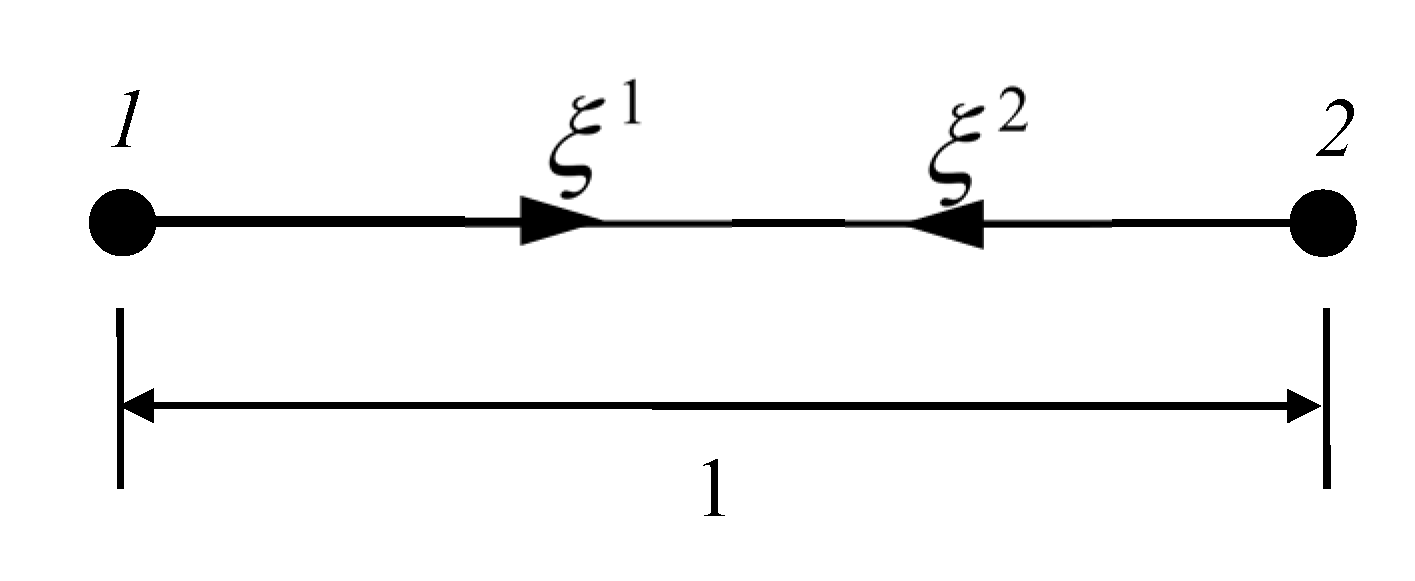
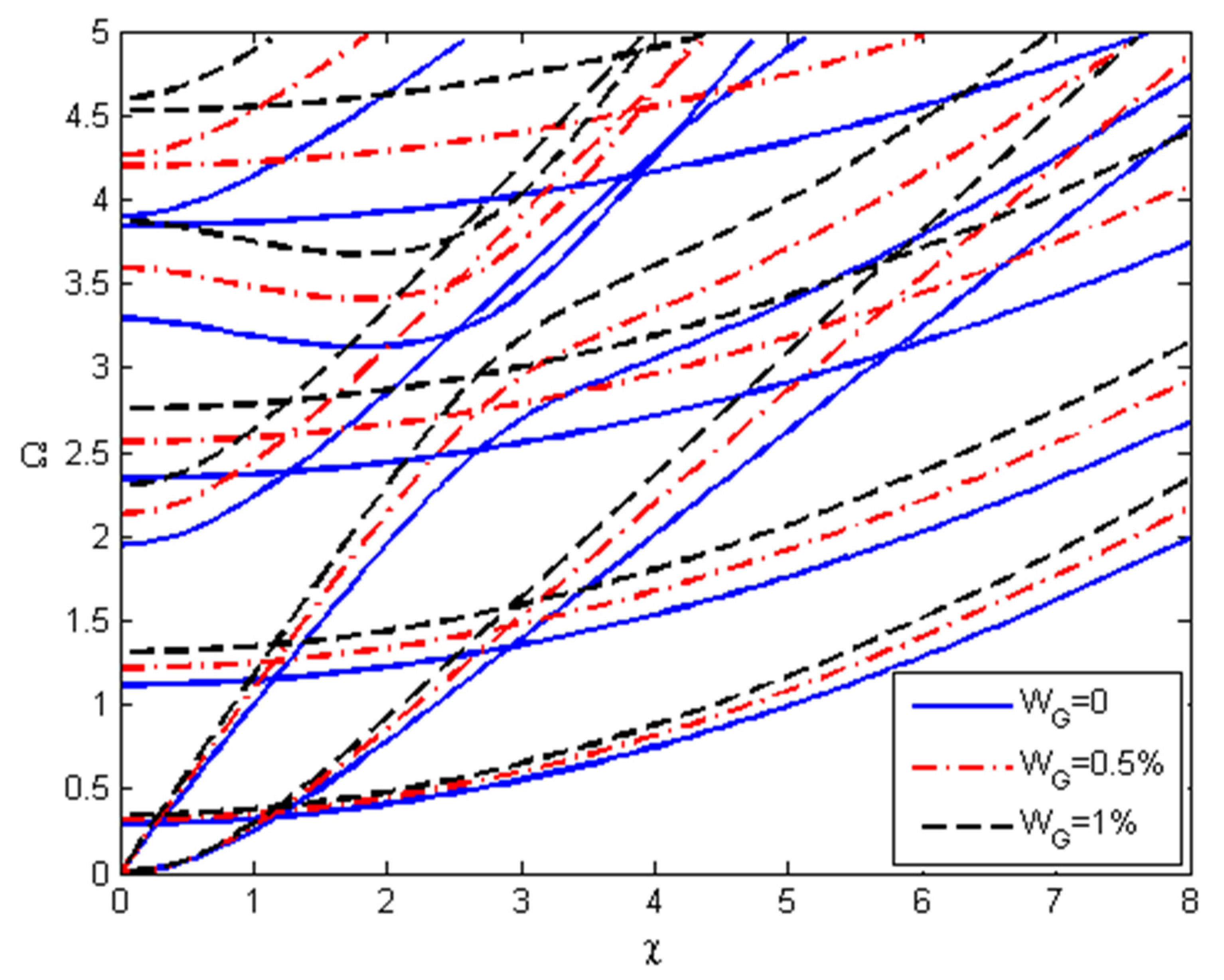
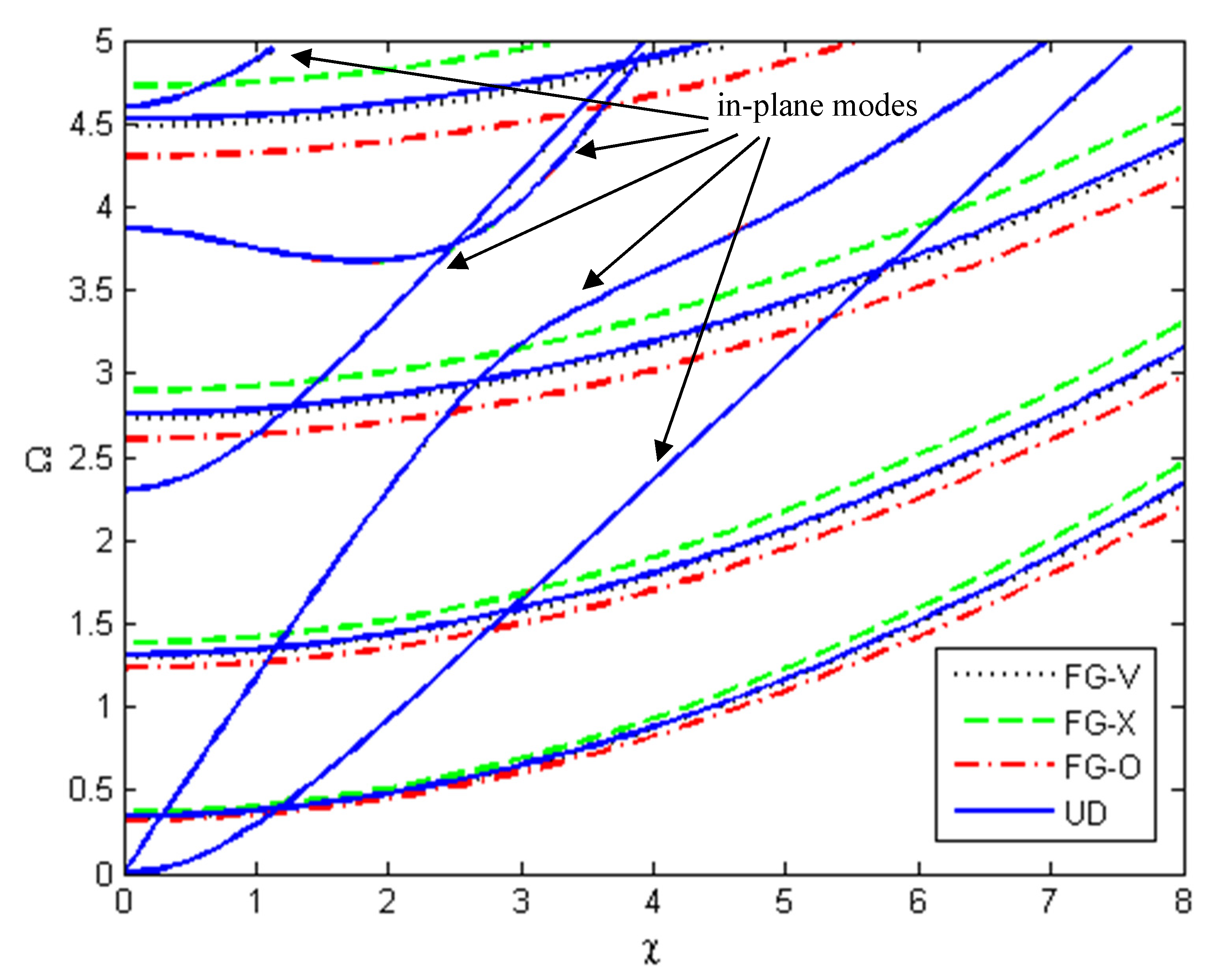
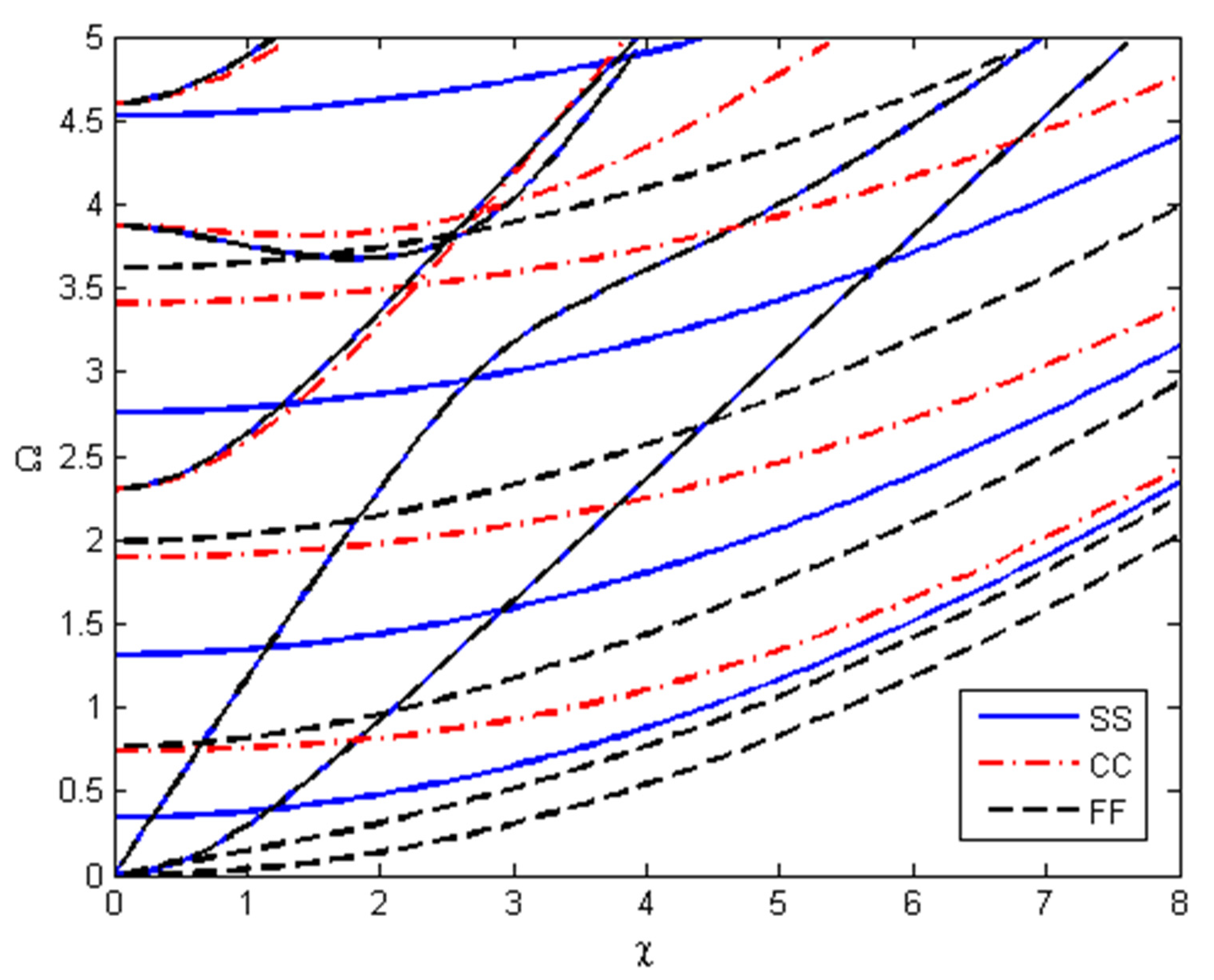
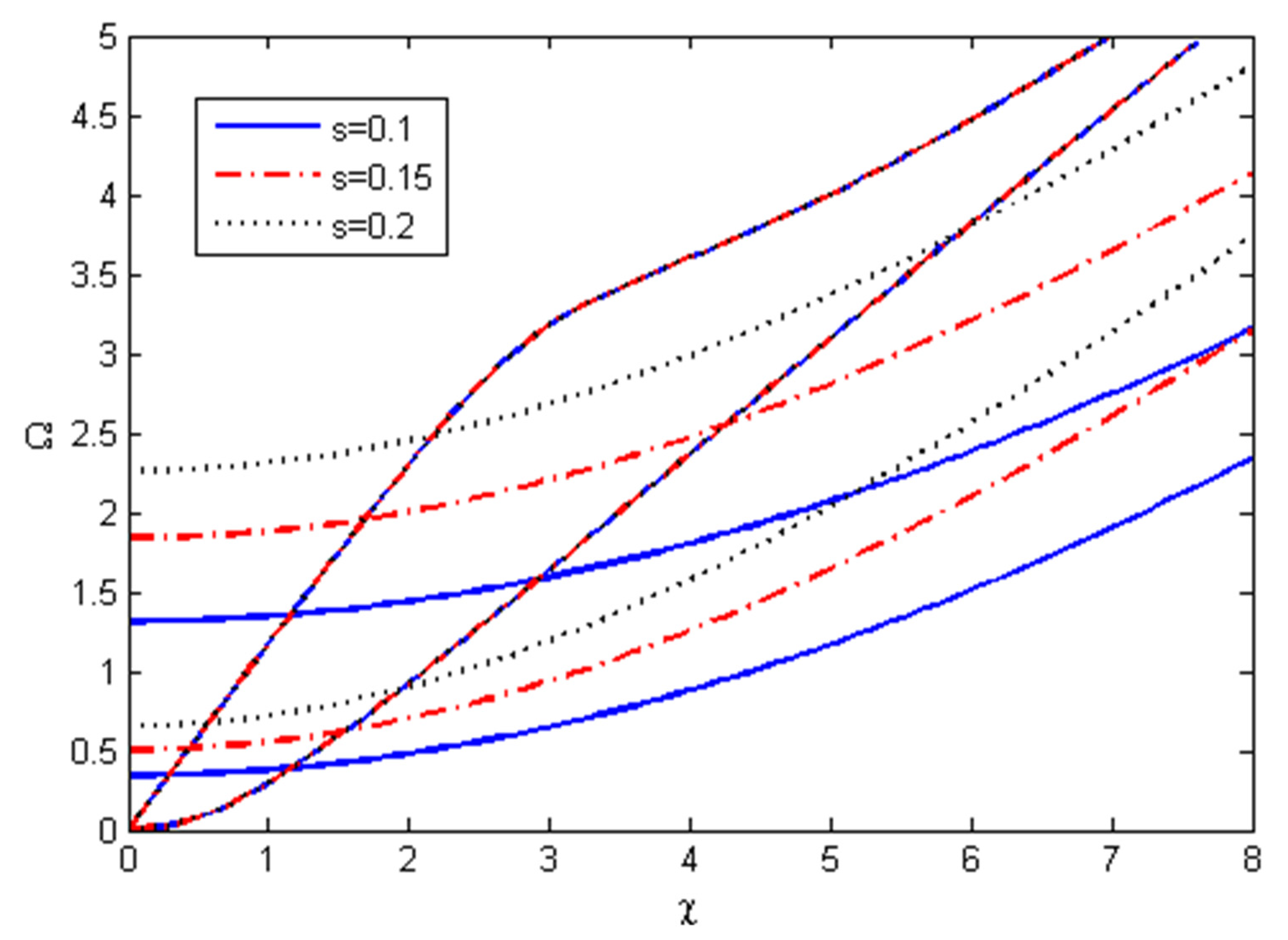
| Material | |||
|---|---|---|---|
| PMMA | 2.5 GPa | 0.34 | 1190 kg/m3 |
| GPLs | 1.01 TPa | 0.186 | 1062.5 kg/m3 |
| WG = 0 | |||||
| Mode | m = 1 | m = 2 | m = 3 | m = 4 | m = 5 |
| 1 | 0.5766 | 1.3758 | 2.5724 | 4.0427 | 5.6884 |
| 2 | 1.3757 | 2.1112 | 2.5726 | 4.6178 | 6.1920 |
| 3 | 1.3758 | 2.1113 | 2.5727 | 5.5164 | 6.1933 |
| 4 | 1.4760 | 3.2274 | 3.2270 | 5.5175 | 6.9880 |
| 5 | 2.5725 | 3.4071 | 3.2273 | 6.6755 | 6.9885 |
| WG = 0.1% | |||||
| Mode | m = 1 | m = 2 | m = 3 | m = 4 | m = 5 |
| 1 | 0.5876 | 1.4019 | 2.6214 | 4.1198 | 5.7980 |
| 2 | 1.4020 | 2.1514 | 3.2892 | 4.7049 | 6.3113 |
| 3 | 1.5044 | 3.2890 | 4.3181 | 4.7054 | 7.1215 |
| 4 | 2.6216 | 3.2892 | 5.3838 | 5.6221 | 8.1849 |
| 5 | 2.8107 | 3.4728 | 5.5734 | 5.6229 | 9.4425 |
| WG = 0.5% | |||||
| Mode | m = 1 | m = 2 | m = 3 | m = 4 | m = 5 |
| 1 | 0.6295 | 1.5022 | 2.8094 | 4.4151 | 6.2143 |
| 2 | 1.5021 | 2.3056 | 3.5249 | 4.4152 | 6.7636 |
| 3 | 1.6133 | 3.5247 | 3.5252 | 4.4153 | 7.6356 |
| 4 | 2.8093 | 3.7245 | 4.6279 | 5.0432 | 7.6358 |
| 5 | 3.0151 | 4.2794 | 4.6281 | 6.0257 | 8.7724 |
| WG = 1% | |||||
| Mode | m = 1 | m = 2 | m = 3 | m = 4 | m = 5 |
| 1 | 0.6782 | 1.6186 | 3.0270 | 4.7585 | 6.6983 |
| 2 | 1.6185 | 2.4842 | 3.7984 | 5.4362 | 7.2900 |
| 3 | 1.7399 | 2.4843 | 3.7988 | 6.4957 | 7.2902 |
| 4 | 3.0271 | 2.4844 | 4.9881 | 7.8604 | 8.2288 |
| 5 | 3.2532 | 3.7983 | 6.2285 | 7.8609 | 8.2301 |
| aG/bG = 1 | |||||
| Mode | m = 1 | m = 2 | m = 3 | m = 4 | m = 5 |
| 1 | 0.6782 | 1.6183 | 3.0267 | 4.7581 | 6.6961 |
| 2 | 1.6183 | 1.6184 | 3.0270 | 4.7584 | 6.6971 |
| 3 | 1.7398 | 2.4839 | 3.7981 | 5.4348 | 6.6973 |
| 4 | 3.0269 | 2.4840 | 4.9879 | 6.4941 | 7.2899 |
| 5 | 3.2529 | 2.4841 | 6.2280 | 6.4945 | 8.2277 |
| aG/bG = 4 | |||||
| Mode | m = 1 | m = 2 | m = 3 | m = 4 | m = 5 |
| 1 | 0.6783 | 1.6186 | 3.0272 | 4.7588 | 6.6978 |
| 2 | 1.6186 | 2.4845 | 3.7991 | 4.7591 | 6.6985 |
| 3 | 1.7400 | 3.7987 | 4.9885 | 5.4351 | 7.2911 |
| 4 | 3.0273 | 4.0178 | 6.2289 | 5.4353 | 8.2296 |
| 5 | 3.2534 | 4.6164 | 8.1301 | 6.4955 | 9.4578 |
| aG/bG = 10 | |||||
| Mode | m = 1 | m = 2 | m = 3 | m = 4 | m = 5 |
| 1 | 0.6783 | 1.6187 | 3.0273 | 4.7592 | 6.6987 |
| 2 | 1.6187 | 2.4846 | 3.0275 | 5.4354 | 7.2903 |
| 3 | 1.7401 | 3.7987 | 3.7990 | 6.4980 | 8.2312 |
| 4 | 3.0275 | 3.7988 | 4.9884 | 7.8609 | 8.2315 |
| 5 | 3.2535 | 4.0179 | 6.2291 | 7.8618 | 9.4575 |
| bG/tG = 10 | |||||
| Mode | m = 1 | m = 2 | m = 3 | m = 4 | m = 5 |
| 1 | 0.6629 | 1.5822 | 2.9590 | 4.6511 | 6.5472 |
| 2 | 1.5820 | 2.4285 | 2.9591 | 4.6515 | 7.1267 |
| 3 | 1.7007 | 3.7128 | 3.7133 | 5.3141 | 8.0444 |
| 4 | 2.9590 | 3.9271 | 4.8759 | 6.3494 | 9.2438 |
| 5 | 3.1799 | 4.5122 | 4.8763 | 7.6830 | 9.2441 |
| bG/tG = 100 | |||||
| Mode | m = 1 | m = 2 | m = 3 | m = 4 | m = 5 |
| 1 | 0.6763 | 1.6140 | 3.0187 | 4.7449 | 6.6789 |
| 2 | 1.6139 | 2.4773 | 3.7873 | 5.4216 | 6.6806 |
| 3 | 1.7350 | 2.4774 | 3.7881 | 6.4760 | 7.2672 |
| 4 | 3.0186 | 3.7878 | 4.9743 | 6.4773 | 7.2707 |
| 5 | 3.2440 | 4.0061 | 6.2109 | 7.8382 | 7.2708 |
| bG/tG = 1000 | |||||
| Mode | m = 1 | m = 2 | m = 3 | m = 4 | m = 5 |
| 1 | 0.6782 | 1.6186 | 3.0270 | 4.7585 | 6.6983 |
| 2 | 1.6185 | 2.4842 | 3.7984 | 5.4362 | 7.2900 |
| 3 | 1.7399 | 2.4843 | 3.7988 | 6.4957 | 7.2902 |
| 4 | 3.0271 | 2.4844 | 4.9881 | 7.8604 | 8.2288 |
| 5 | 3.2532 | 3.7983 | 6.2285 | 7.8609 | 8.2301 |
Publisher’s Note: MDPI stays neutral with regard to jurisdictional claims in published maps and institutional affiliations. |
© 2022 by the authors. Licensee MDPI, Basel, Switzerland. This article is an open access article distributed under the terms and conditions of the Creative Commons Attribution (CC BY) license (https://creativecommons.org/licenses/by/4.0/).
Share and Cite
Zhou, Y.; Liu, D.; Zhu, J. Vibration and Wave Analyses in the Functionally Graded Graphene-Reinforced Composite Plates Based on the First-Order Shear Deformation Plate Theory. Appl. Sci. 2022, 12, 3140. https://doi.org/10.3390/app12063140
Zhou Y, Liu D, Zhu J. Vibration and Wave Analyses in the Functionally Graded Graphene-Reinforced Composite Plates Based on the First-Order Shear Deformation Plate Theory. Applied Sciences. 2022; 12(6):3140. https://doi.org/10.3390/app12063140
Chicago/Turabian StyleZhou, Yunying, Dongying Liu, and Jun Zhu. 2022. "Vibration and Wave Analyses in the Functionally Graded Graphene-Reinforced Composite Plates Based on the First-Order Shear Deformation Plate Theory" Applied Sciences 12, no. 6: 3140. https://doi.org/10.3390/app12063140
APA StyleZhou, Y., Liu, D., & Zhu, J. (2022). Vibration and Wave Analyses in the Functionally Graded Graphene-Reinforced Composite Plates Based on the First-Order Shear Deformation Plate Theory. Applied Sciences, 12(6), 3140. https://doi.org/10.3390/app12063140







